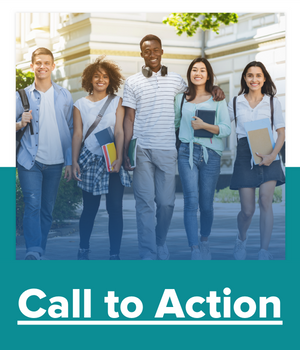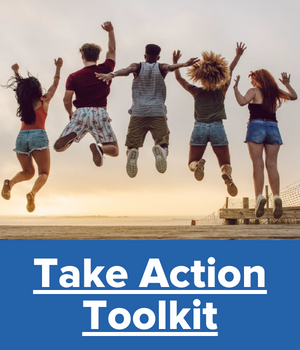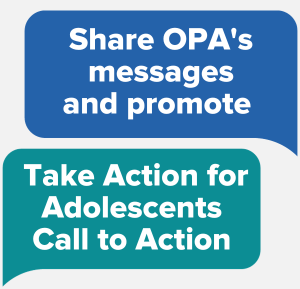
NEW in 2024: Please read this trademarking guidance before using the Take Action for Adolescents™ name. For assistance, please contact: opa@hhs.gov.
Overview of Take Action for Adolescents™
Take Action for Adolescents ‒ A Call to Action for Adolescent Health and Well-Being (“Take Action for Adolescents”) aims to ensure that all adolescents in the United States have the safety, support, and resources they need to thrive, be healthy, and realize their full potential.
Take Action for Adolescents is the result of extensive collaboration and input from allies and partners, including numerous agencies across the federal government, nongovernmental organizations and experts, and young people. The document provides actionable guidance to support and build on the strengths, talents, and potential of the 64 million young people in the United States.
Take Action for Adolescents outlines eight goals and aligned initial action steps that can help create coordinated systems, services, and supports that young people need to thrive. Read more about Take Action for Adolescents and share the two-page overview.
What is the Take Action for Adolescents?
Many adolescents in the U.S. face challenges in obtaining the health care and services they need to thrive, be healthy, and realize their full potential.
Take Action for Adolescents is a call to action for adults—including policy makers, health care and human service providers and organizations, youth-serving professionals and organizations, researchers, parents, legal representatives, and caregivers—to work collaboratively for change that benefits young people. It details initial action steps that can be customized to help achieve each of the goals. The call to action and accompanying Take Action Toolkit include examples of federal programs and resources that support adolescent health and well-being.
The goals and action steps in Take Action for Adolescents are designed to inspire individuals and organizations to develop innovative approaches that break down silos, improve systems that impact young people, and identify policies and programs that support young people and help them thrive. These types of investments in adolescent health and well-being can generate "triple dividend": health for adolescents now, a healthy adult life, and better health for the next generation.
 An official website of the United States government
An official website of the United States government



